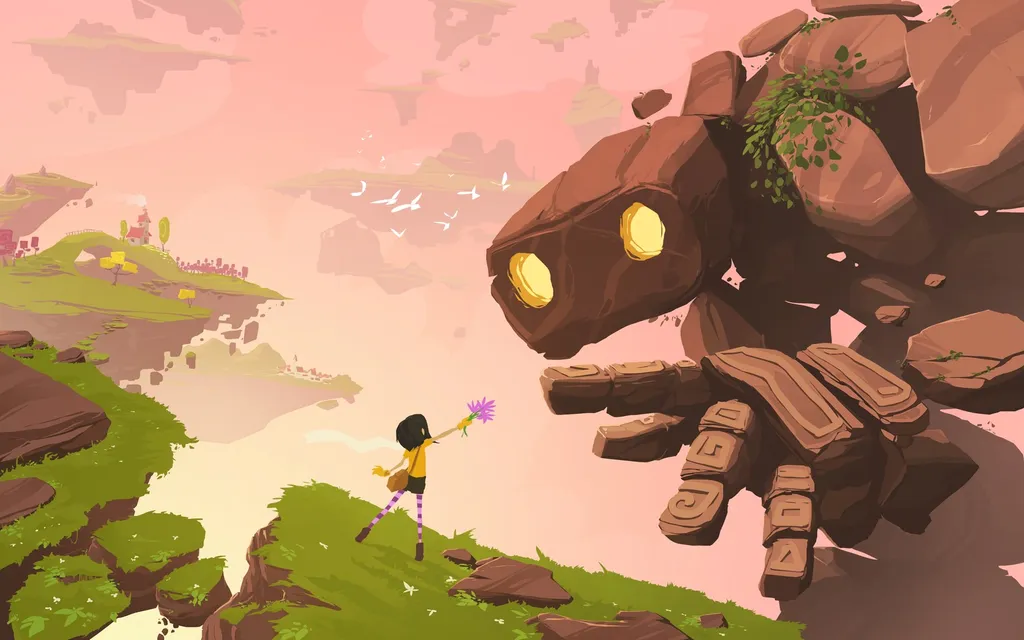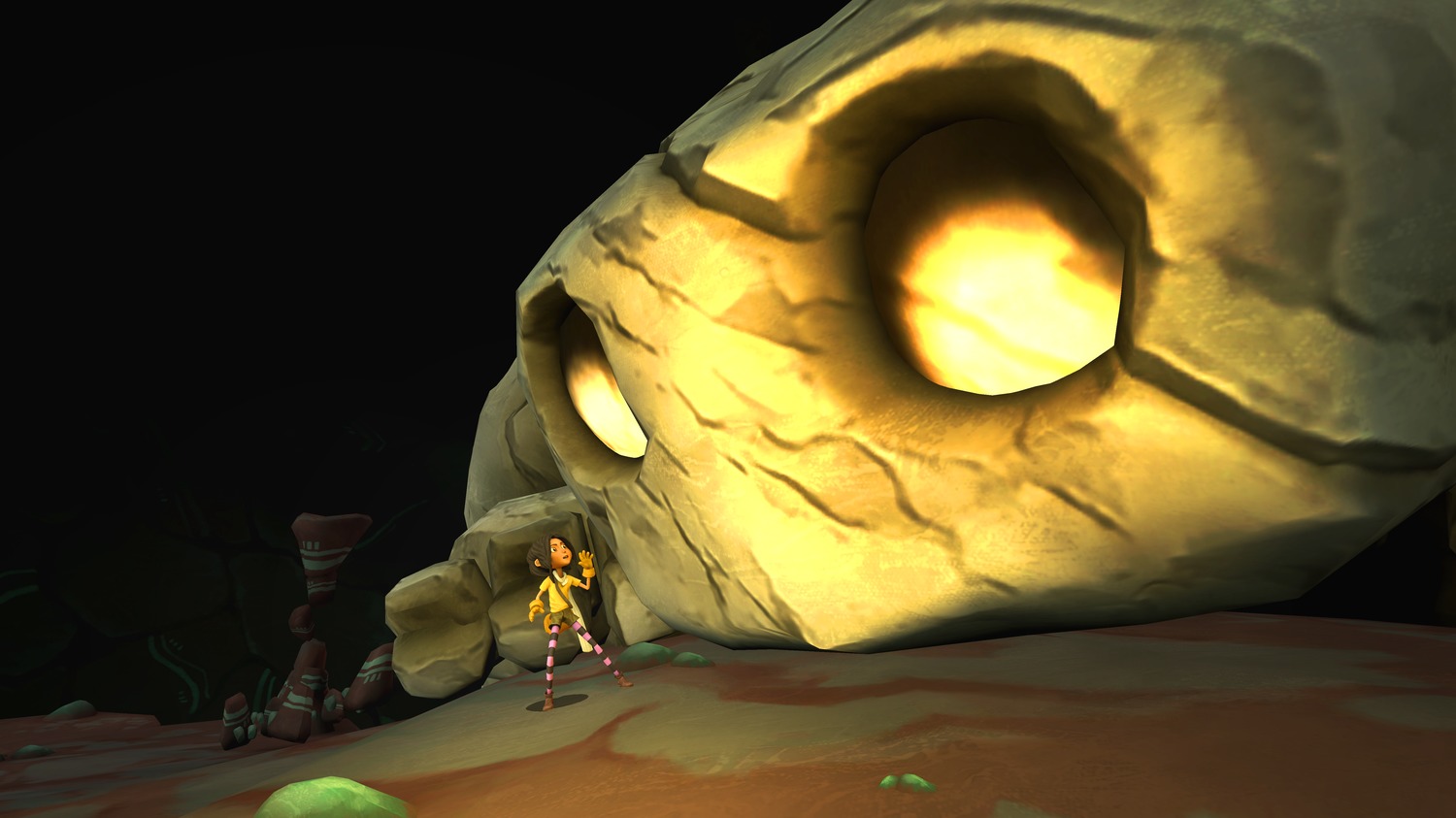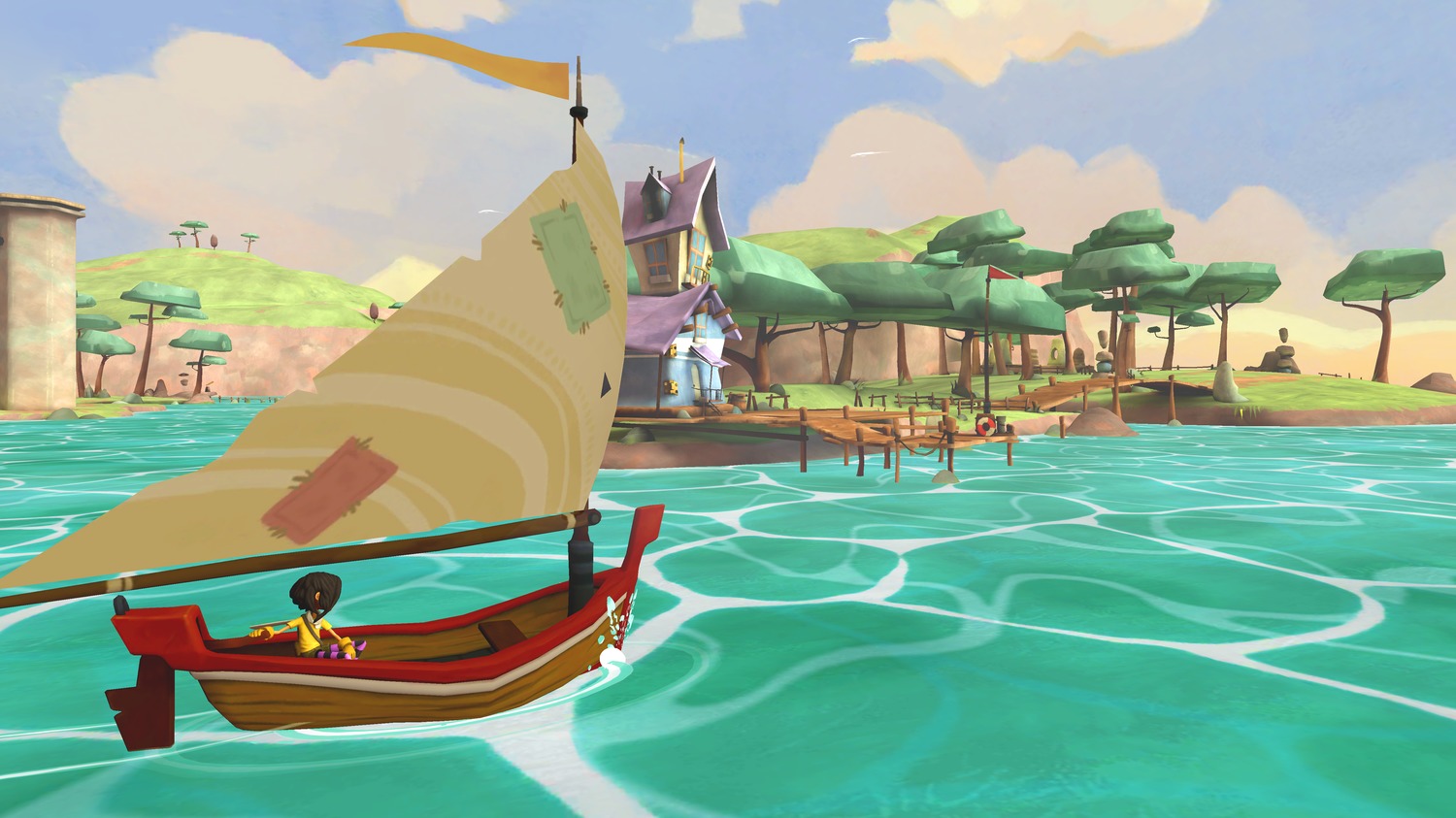Designing adventure-puzzle games must be an adventurous puzzle in its own right. You start with a core hook that you think players will find engaging, but how do you utilize, expand and evolve those mechanics over the course of several hours? How do you find new ways to use abilities that delight your audience? How do you create something that constantly feels fresh and exciting, and doesn’t grow stale?
I’ve played entire VR games that have struggled with those questions, but Lola And The Giant suggested to me that it had the right answers in just a 30 minute preview. This is the latest Daydream game from Climax Studios, the developer of Hunters Gate, which debuted on Google’s mobile VR platform at launch. It’s a third and first-person adventure that casts you as two characters, and you can probably guess who they might be.
You’re first introduced to Lola, a young girl that awakens in a dark cave. To navigate in third-person, you swipe up on the Daydream controller and point her in the direction you want to head. She’ll automatically jump small gaps and head up steps. She also has the power to alter the size of objects, allowing her to narrow jumps by expanding platforms, or clear paths by shrinking rocks among other things.
As I explore the cave, though, I soon meet the game’s second star. Giant is a huge, lovable rock monster that could topple cities but appears to be as gentle as they come. He’s played from a first-person view, and in the first level you use him to smash and move rocks, switching between him and Lola at any point.
The two make for an unlikely pairing, but you can already imagine the tale of friendship that will play out over the next few hours. But it wasn’t companionship that gave Climax the idea for Lola; it was parenthood.
“Lola and the Giant was born out of when I had my daughter, Ella,” Lead Designer Matt Duff tells me. “When she was first born I remember walking around the living room with her in my arms thinking about how I see the world from my vantage point is and how she must see the world much smaller.”
That line of thought led Duff onto VR’s sense of scale, and how it can create memorable experiences. “And then I thought of the name Ella and the Giant,” he said. “But then I thought of Lola and the Giant, which sounds better.” If you’re reading this in the future, Ella, I thought you should know that bit. Duff’s wife was okay with it, too.
Climax’s hook, then, was how moving between different scales would change the gameplay, and the developer soon gets to work exploring that idea. Minutes after meeting Giant, I come across a set of rocks that have to be arranged in a particular order so that Lola can scale them and move on. While the game’s visual-style oozes with beautiful children’s storybook inspiration (just look at the gorgeous art above), its puzzles were far from a pushover; this one in particular had me switching blocks around for a while before I found the correct solution.
The entire game isn’t set in this cave though; there are several levels that differ in both environment and play style. While this introduction had me trot a fairly straightforward path, the second level is set in a much more open environment and gives me plenty of opportunity to explore. I meet strange little creatures that are a mix of rabbit and frog (frabbits, I think they were called), and I’m reminded of the charm of something like Media Molecule’s Tearaway, or Nintendo’s Animal Crossing when Lola giggles and waves as she talks to them.
A lot of VR games and experiences hope to get by on that charm alone, but Lola genuinely has a spark of promise to its gameplay; it’s one of the few times I haven’t found myself frustrated by Daydream’s controls, and switching to Giant’s perspective to explore how he might be able to clear a path for Lola felt intuitive and inventive.
Climax is also keeping that invention alive outside of the game. Mobile VR can sometimes be a little awkward when surrounded by other people, as they can’t see what you’re playing. Lola, meanwhile, has a companion app that allows players to jump into the world on a second smartphone and look around with a 360 degree view. They can also tap to highlight areas that might be of interest to other players, and switch between Lola and Giant’s view at will. It’s not exactly a game changing feature, but it’s an appreciated bonus.
I only saw a slice of the game, but Lola and the Giant is looking like it might be one of Daydream’s most interesting games yet. I’m looking forward to seeing how Climax keeps the adventure fresh throughout, without struggling with the same pitfalls of games like Psychonauts in the Rhombus of Ruin. If it succeeds, then this might be an unmissable VR experience.
































